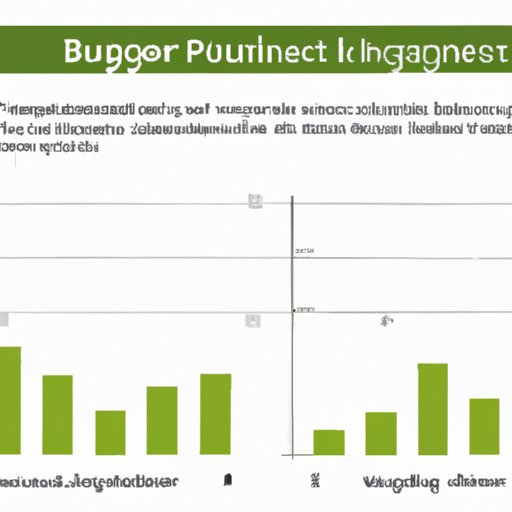
Introduction
Budget variances are an essential aspect of healthcare financial management. They help organizations to identify discrepancies between planned and actual expenses and revenue. Understanding budget variances is crucial for organizations to adjust their budgets, manage financial performance, and make informed decisions. This article aims to provide an in-depth understanding of the common types of budget variances in healthcare, the impact of these variances, and effective strategies to manage them. This guide is intended for healthcare administrators, financial managers, and all healthcare professionals who are involved in financial management.
Breaking down the basics: Understanding the common types of budget variances in healthcare
Budget variances are the differences between planned and actual revenue or expense. These variances occur due to various factors such as unforeseen circumstances, inaccurate forecasting, or poor financial management. In healthcare, budget variances can be divided into three categories: revenue variances, expense variances, and volume variances.
Revenue variances occur when the actual revenue generated by the healthcare organization differs from the planned revenue. This can occur due to various factors such as changes in the payer mix, shifts in service volumes, or inaccurate billing. For example, if a hospital projected $1 million in monthly revenue but only earned $800,000 in a given month, this would create a negative revenue variance of $200,000.
Expense variances occur when actual expenses are higher or lower than the planned expenses. This can occur due to unforeseen circumstances such as unexpected price increases, changes in staffing levels or supply costs, or changes in patient demand. For example, if a hospital had planned to spend $100,000 on medical supplies in a given month but ended up spending $120,000, this would create a negative expense variance of $20,000.
Volume variances occur when actual patient volumes are higher or lower than planned volumes. This can occur due to factors such as changes in patient demographics, changes in referral patterns, or changes in the number of physicians on staff. For example, if a hospital had planned to see 500 patients in a month but only saw 400, this would create a negative volume variance of 100 patients.
Navigating healthcare budgeting: A guide to identifying and interpreting budget variances
Identifying budget variances involves comparing actual performance with budgeted performance. This requires regular monitoring and review of financial reports and statements. Once identified, it is crucial to interpret the variances to understand the impact on financial performance. Effective interpretation of budget variances involves understanding the root causes of variances and the potential consequences for the organization.
To interpret budget variances effectively, healthcare organizations should focus on analyzing the variances’ trends, magnitude, and frequency. This can help identify the underlying causes of variances and their impact on financial performance. For example, if an organization has consistently negative revenue variances, this could indicate issues with billing accuracy or payer denials.
Strategies for interpreting budget variances effectively include analyzing the variances in the context of the healthcare organization’s business model and objectives, conducting a root cause analysis of significant variances, and engaging key stakeholders in the interpretation process.

The impact of budget variances in healthcare: An analysis of the most common types
Budget variances can significantly impact healthcare organizations’ financial performance. Revenue variances can lead to decreased profitability and cash flow issues, while expense variances can lead to budget overruns and decreased financial stability. Volume variances can impact both revenue and expense, depending on whether the organization has over-or underutilized resources.
Case studies can illustrate the real-life consequences of budget variances. For example, a hospital with consistently negative revenue variances due to billing inaccuracies may experience cash flow issues and struggle to meet expenses. A healthcare organization with consistently positive volume variances due to staffing shortages may experience increased staffing costs but no increase in revenue to offset those costs. These real-life scenarios demonstrate the importance of managing budget variances effectively.
How to effectively manage budget variances in healthcare settings: Tips and strategies
Effective management of budget variances is crucial for healthcare organizations to maintain financial stability and success. Strategies for managing budget variances effectively include setting achievable targets, implementing a regular variance review process, conducting a root cause analysis of significant variances, and developing corrective action plans.
Setting achievable targets involves creating budget plans and targets that are realistic and aligned with the healthcare organization’s business model and objectives. Implementing a regular variance review process involves tracking budget variances regularly and reviewing them with key stakeholders to identify trends and potential causes. Conducting a root cause analysis of significant variances involves identifying the primary causes of significant variances and developing corrective action plans to address them.
Exploring the root causes of budget variances in healthcare: A closer look
Budget variances can occur due to various factors in healthcare organizations. Identifying the root causes of budget variances is crucial for managing them effectively. Common causes of budget variances in healthcare settings include inaccurate forecasting, changes in patient demand, staffing shortages, and operational inefficiencies.
Inaccurate forecasting can lead to revenue variances when projected revenues are not realized or expense variances when unexpected expenses occur. Changes in patient demand can impact revenue and expense variances, depending on whether the organization has over or under-utilized resources. Staffing shortages can lead to volume variances when patient loads exceed the organization’s capacity. Operational inefficiencies can lead to expense variances when processes are not followed or inefficiently managed.
The relationship between budget variances and financial performance in healthcare organizations
The link between budget variances and financial performance is essential for healthcare organizations to understand. Managing budget variances effectively is crucial for achieving financial stability and long-term success. The management of budget variances includes identifying the financial impact of variances, understanding the root causes of variances, and implementing corrective action to minimize the impact of variances on the organization’s financial performance.
Conclusion
In conclusion, budget variances are an essential aspect of healthcare financial management that can significantly impact organizations’ financial performance. Understanding the common types of budget variances, identifying and interpreting them effectively, and managing them, are critical for healthcare organizations’ success. By developing effective budget variance management strategies, such as setting achievable targets, implementing a regular variance review process, and conducting root cause analyses, healthcare organizations can achieve financial stability and long-term success.





